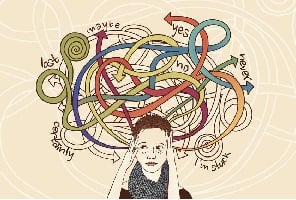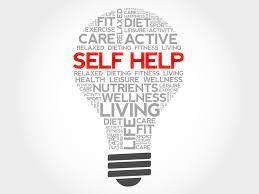It’s not just women who experience PTSD after a traumatic event-men can suffer from the disorder as well. In fact, according to the National Center for PTSD, about 7% of men will experience PTSD at some point in their lives. If you are a man and you are experiencing symptoms of PTSD, it is important to get help. This blog post will discuss the symptoms of PTSD in men, as well as how to get help.
Contents
Understanding PTSD
 PTSD is a condition that can develop after a person experiences or witnesses a traumatic event. The individual may feel scared, helpless, or alone. These feelings can be so intense that they change the way the person sees the world.
PTSD is a condition that can develop after a person experiences or witnesses a traumatic event. The individual may feel scared, helpless, or alone. These feelings can be so intense that they change the way the person sees the world.
It is believed that most people will experience PTSD at some point in their lives. The condition is not limited to any one group, but there are certain groups that seem to be more at risk. However, this impacts everyone differently.
According to studies, PTSD is a serious condition that can have a profound impact on a person’s life. It is important to be aware of the symptoms and to seek help if you or someone you know is struggling. As per the records of NIMH, National Institute of Mental Health, an estimated 6 percent of U.S. adults have PTSD in any given year. And 2% of men and nearly double that number of women will suffer from PTSD at some point in their lives.
While anyone can develop PTSD, there are certain groups that seem to be more at risk. For example, a person who has experienced a natural disaster, car accident, or military combat is more likely to develop the condition. It can be very difficult to deal with, o be aware of the symptoms, and seek help.
What Causes PTSD In Men?
It is often believed that every case of PTSD is different and when it comes to gender, there are definitely differences. The causes and risk factors of PTSD in men are similar to those of women. However, there are also some unique risk factors that men face which can contribute to the development of PTSD.
Some of the most common causes of PTSD in men include:
- Combat experiences
- Employment-related trauma
- Childhood abuse or neglect
- Witnessing a traumatic event
- Natural disasters
- Being the victim of a violent crime
For a man, these causes can be extremely overwhelming and can lead to feelings of anxiety, depression, and even isolation. It is really important to understand the difference between PTSD and depression because they are two very different conditions. Depression is a mental illness that can be treated with medication and therapy, but PTSD requires different treatment methods.
How Does It Differ?
 PTSD symptoms in men can manifest differently than they do in women. It is not uncommon for men to bottle up their emotions and try to deal with them on their own. It is actually one of the most common ways that men deal with trauma. This can often lead to problems down the road because it doesn’t allow for proper healing.
PTSD symptoms in men can manifest differently than they do in women. It is not uncommon for men to bottle up their emotions and try to deal with them on their own. It is actually one of the most common ways that men deal with trauma. This can often lead to problems down the road because it doesn’t allow for proper healing.
PTSD is different in men from women because:
- Men are more likely to self-medicate with drugs or alcohol
- act out their aggression through violence
- try to deal with their emotions on their own instead of seeking help
- Difference in causes
The most common cause of PTSD in men is combat experiences. This is due to the fact that men are more likely to be exposed to combat than women. If you are a man who is struggling with PTSD, it is important to understand that you are not alone. And you should end the stigma that men can’t have PTSD.
What Are The PTSD Symptoms In Men?
As we discussed that PTSD is different in men to women. then, the symptoms of PTSD also differ. However, the most common symptom that is found in both women and men is avoidance. But there are some other PTSD symptoms in men that are different from women. So, let’s take a look at them.
Anger
In men, anger is one of the most common symptoms of PTSD. This is because men are more likely to internalize their emotions. When they experience trauma, they may bottle up their emotions and not express them. This can lead to outbursts of anger or violence. In fact, it is also one of the most common symptoms of PTSD in veterans.
Substance Abuse
Another symptom of PTSD in men is substance abuse. This is because men are more likely to self-medicate with drugs or alcohol. This can help them numb their emotions and make them feel better. However, it can also lead to addiction and other problems. But, men usually feel like they need to drink or use drugs to cope with their emotions.
Recklessness
Another symptom of PTSD in men is recklessness. This is because men may take risks to feel alive. They may do dangerous things or put themselves in harm’s way. This can lead to accidents or injuries. But, it can also help them release some of the stress and anxiety they are feeling. For instance, if you are a veteran with PTSD, you may skydive or bungee jump.
Detachment
It is like a switch has been flipped inside them and they become emotionally distant. They may seem cold, uncaring, or withdraw from previously enjoyed activities. This may cause problems in their relationships. Moreover, detachment makes it difficult for them to express their feelings or bond with others.
Insomnia
This is very common among people with PTSD. Nightmares about the traumatic event may make it hard to fall asleep or stay asleep. Some men may have trouble falling asleep because they are “hypervigilant,” meaning they are always on the lookout for danger. This can lead to fatigue and further sleep problems. In fact, studies have shown that people with PTSD are more likely to suffer from sleep disorders than the general population.
Intrusive thoughts
 Intrusive thoughts are persistent, unwanted thoughts that can be related to the trauma. They can also be unrelated to the trauma but are still distressing. For example, someone with PTSD may have intrusive thoughts about harming themselves or others. Intrusive thoughts are often accompanied by flashbacks and nightmares.
Intrusive thoughts are persistent, unwanted thoughts that can be related to the trauma. They can also be unrelated to the trauma but are still distressing. For example, someone with PTSD may have intrusive thoughts about harming themselves or others. Intrusive thoughts are often accompanied by flashbacks and nightmares.
Flashbacks are memories of the traumatic event that feel like they’re happening in the present. They can be triggered by anything that reminds the person of the trauma, such as a sound, smell, or sight.
Nightmares are dreams that are related to the trauma. They can be very realistic and vivid. People with PTSD often have nightmares about the trauma, which can be extremely distressing.
So, these are some common PTSD symptoms in men that you should be aware of. If you or someone you know is experiencing these symptoms, it’s important to seek professional help. PTSD can be a very debilitating condition, but with treatment, people can and do recover.
How To Treat PTSD Symptoms In Men?
When you are aware of the symptoms of PTSD, it is easier to identify when someone you know is going through it. There are many treatments available for PTSD, and the most effective ones will vary from person to person. Some common treatments include:
Cognitive-Behavioral Therapy
CBT is a type of therapy that helps people identify and change negative thinking and behavior patterns. It is a therapy that helps you understand how your thoughts and emotions affect your behavior. More often, this aims at helping you develop coping mechanisms to deal with your trauma.
For example, if you are constantly reliving your trauma through nightmares, CBT can help you recognize and change the thoughts and emotions that are causing the nightmares. It actually teaches you how to control your dreams.
In one study, 70% of men who received CBT no longer met the criteria for PTSD after 12 weeks. Because of its effectiveness, CBT is often the first line of treatment for PTSD.
Prolonged Exposure
This is a therapy that involves repeatedly reliving the experience in a safe and controlled environment, which can help lessen the power of the memory. The therapist will help you to recount your story in detail, including all the thoughts, emotions, and physical sensations you felt at the time.
This process can be really difficult, but it’s often very effective in treating PTSD. It usually lasts for 3 months and it basically includes two types of exposure:
Vivo exposure means you’ll directly face the things that trigger your PTSD symptoms. For instance, if you avoid driving because you were in a car accident. then, your therapist will help you gradually confront your fear by driving with you around town.
Imaginal exposure means you’ll recount your trauma in detail to your therapist. You’ll talk about what happened, how it made you feel, and any thoughts or beliefs you have about the experience. This can be really tough to do, but it can help lessen the hold that your trauma has on you.
Prolonged exposure is one of the most effective treatments for PTSD, but it’s not right for everyone. It takes a lot of courage to face your fears head-on, and some people just aren’t ready for that. But if you think you can handle it, this might be a good option for you.
Cognitive Processing Therapy
 This is another type of exposure therapy, but it focuses on helping you to change the way that you think and feel about your trauma. This can be really helpful in reducing symptoms of PTSD, as it helps you to understand and process what has happened to you in a more positive light.
This is another type of exposure therapy, but it focuses on helping you to change the way that you think and feel about your trauma. This can be really helpful in reducing symptoms of PTSD, as it helps you to understand and process what has happened to you in a more positive light.
It is more like group therapy, as you will be learning with other people who have been through similar experiences. You will also be given homework to do between sessions, which will help you to practice what you have learned.
Cognitive Processing Therapy usually takes place over 12 weeks, and each session lasts for around 90 minutes. It aims at helping you to understand and challenge your thoughts about your trauma, and to learn new coping skills.
Internal Family Systems
This is a model of psychotherapy that views the individual as having several sub-personalities or “parts.” Each part has its own unique perspective, emotions, and qualities. The parts work together to help the individual meet their needs and cope with their environment.
It is a type of approach to psychotherapy that is gaining popularity. Because it is believed to be helpful in treating a wide range of mental health disorders, including PTSD. It generally works through a process of self-exploration and understanding the different parts of the self.
Group Therapy
Group therapies are one of the most effective forms of treatment for PTSD. In group therapy, you’ll be able to share your experiences with other men who have been through similar trauma. This can be an incredibly powerful experience and can help you to feel less alone.
You’ll also be able to learn from the experiences of others and gain new insights into your own recovery. This is more like joining a support group but in a more formal setting. There are different types of group therapies, so be sure to ask your therapist about which one would be most beneficial for you.
Group therapy is an important part of the healing process for many men with PTSD. If you’re feeling stuck in your recovery.
Consider Medications
Medications are another important part of treatment for PTSD. While there is no one perfect medication for everyone, there are many options that can be effective. Some people may need to try a few different medications before finding the one that works best for them.
There are three main types of medications used to treat PTSD:
- Antidepressants
- Anti-anxiety medications
- PTSD-specific medications
Work with your doctor to find the right medication or combination of medications for you. And be patient as you try different medications, as it can take some time to find the one that works best for you.
Self-help Strategies
 No matter what type of trauma you experienced, there are self-help strategies always to help and support you in managing your PTSD symptoms. Some self-help strategies that may help you to manage your PTSD symptoms include:
No matter what type of trauma you experienced, there are self-help strategies always to help and support you in managing your PTSD symptoms. Some self-help strategies that may help you to manage your PTSD symptoms include:
- Identifying and challenging your negative beliefs: One of the most common negative beliefs people who develop PTSD hold is “I am weak/bad/flawed because I got traumatized. This is not true.”
- Identifying your personal strengths: This can help you to focus on the positive aspects of yourself and give you a sense of empowerment.
- Seeking social support: Talking to others who have gone through similar experiences can help normalize your reactions and give you a sense of belonging.
- Building a trauma narrative: Writing or talking about your experience can help you to make sense of what happened and integrate the event into your life story in a more positive way.
- Practicing relaxation techniques: This can help to reduce your overall anxiety and stress levels.
- Increasing pleasurable activities: Doing things that make you feel good on a regular basis can help to boost your mood. And offset some of the negative effects of PTSD.
So, these are some ways that might help you in managing your PTSD symptoms. If you feel like you need more professional help, please do not hesitate to seek therapy from a mental health professional. PTSD does not have to control your life. With proper treatment and self-care, you can live a happy and fulfilling life.
Conclusion
To conclude, PTSD symptoms in men can vary greatly from person to person. It is important to seek professional help if you or a loved one are struggling with PTSD. With proper diagnosis and treatment, many people are able to lead happy and fulfilling lives. Also, it is worth mentioning that PTSD can affect anyone, regardless of gender. If you are struggling, please reach out for help. You are not alone.
For more information, please contact MantraCare. PTSD or Post-Traumatic Stress Disorder is a mental health condition that affects people who have experienced or witnessed a traumatic event. If you have any queries regarding Online PTSD Counseling experienced therapists at MantraCare can help: Book a trial PTSD therapy session


